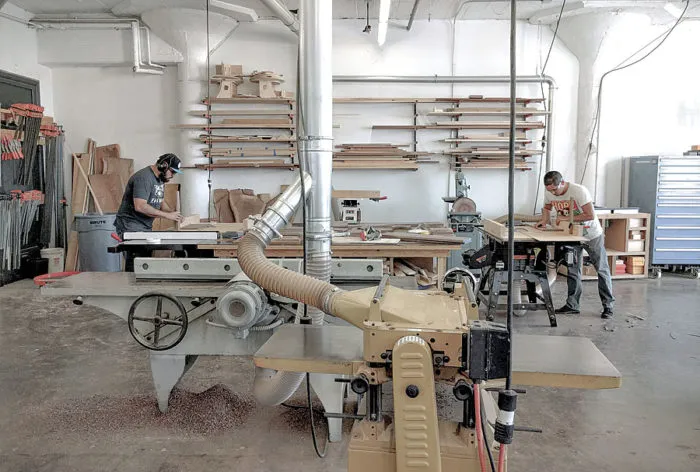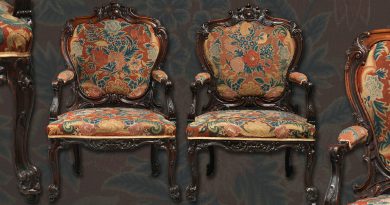Capturing Charles Rohlf’s Arts and Crafts Style

My interest in Charles Rohlfs’s work began in 2012 when I saw pictures of his tall back chair and 1898 desk chair. I thought that they were the most beautiful chairs I had ever seen. (A copy I made of the tall back chair appears in Gallery, FWW #291.) I’m attracted to the artistic and eclectic nature of his work.
I also like his unconventional nature. He was a bit eccentric, and I suppose that appeals to me too. He is quoted as saying, “If I make a chair, I am a chair.”
I’ve been researching and re-creating Rohlfs’s furniture for more than a decade to understand Rohlfs from a woodworker’s perspective and to uncover the construction details.
Charles Rohlfs (1853–1936)

At the beginning of the last century, Charles Rohlfs achieved national and international acclaim as one of the world’s most innovative and artistic woodworkers. His furniture contains many Arts and Crafts elements but is set apart by its unique shapes, artistic ornamentation, fretwork, and carving details, which have Art Nouveau, Asian, and Gothic influences.
Like many woodworkers, Rohlfs started building furniture for his home, working in a rudimentary attic workshop. He then began to take furniture commissions for friends and acquaintances. Around 1899 he transitioned from struggling actor to furniture designer.
For the next decade he continued making furniture in his Buffalo, N.Y., workshop. Rohlfs’s works gained national prominence following publication of a January 1900 House Beautiful article.
Defining characteristics
While his furniture is wildly different from other work of the time, there are some common aesthetic and construction threads running through much of it.
Rohlfs’s work was made occasionally from mahogany but mostly from oak or ash with a dark, matte-brown finish sometimes tinted with green or black. His distinctive carvings ranged from relief work with the sweeping curves and swirls of rising smoke to others inspired by the curves of a fiddlehead culminating in an ever-tightening spiral. Fretwork motifs with stylized shapes of plants and trees are found in much of his work.
Rohlfs’s construction methods were also unconventional. I measured an original version of his swivel desk and have seen photographs of the hall chair. Rohlfs routinely used screws as part of his joinery. The screw holes were covered by protruding faceted plugs. For example, the stiles, rails, and stretchers of the hall chair are joined with screws.
His larger pieces of casework and even some of his chairs feature tusk-tenon joinery with carved decorative wedges.
Before becoming a furniture maker, Rohlfs was a pattern maker in a foundry and a stove designer. As I was constructing the swivel desk, I got the sense that Rohlfs had used some of the techniques from metal fabrication to build his furniture. For example, the body of the swivel desk is an internal structural frame. The side panels are purely decorative and are screwed on.
Recreating Rohlfs
I start with pictures sourced from books and the internet. Auction websites often include very useful photographs. If possible, I visit a museum to see firsthand the work I want to reproduce. With basic information, I draw a simple plan by scaling a photograph.
If I have the height, width, and depth, I can dimension the other parts. Raised plugs indicate screw locations. If I get stuck, I glean clues from plans of other pieces of furniture from the Arts and Crafts era.

Any mistakes are made on the prototype. Prototyping also provides Marcucci the opportunity to practice cutting the fretwork. He makes the carved elements from more forgiving basswood before attempting them on the final piece.
Swivel desk
The swivel desk is part of a collection known as the “Graceful Writing Set,” which also includes a hall chair and a waste container. Surviving examples of the set are in the decorative arts collections of many U.S. museums.
I saw the swivel desk at the Nelson-Atkins Museum of Art in Kansas City and the hall chair at the Los Angeles County Museum of Art. I had close access to an original swivel desk and took detailed measurements and photographs.
A conventional designer would build a fixed desk and a swivel chair. Rohlfs did the opposite. Rotating the desk allows access to the drawers and door at either end and to the angled back, which can be used to display a book or artwork.
To create the swiveling action, three small wheels are set into the top of the base. They are placed at 120° from each other and an 8-1/2-in. radius from the central pivot point. The desk’s middle section connects to the pivot point with a bolt and rotates on the three wheels. The fretted front panels are screwed to an inner structural framework.
The desk’s top section sits on the middle case. Its pointed-arch sides overlap the middle case at the bottom and attach with screws. Where there is smoke there is fire: A rising-smoke carving decorates the front of the desk, and the top is finished with flame-shaped carved finials.
Hall chair and waste container
The hall chair was first constructed in 1899. Variations of the chair feature different fretwork patterns, and differently shaped and adorned crest, side, or front rails. My reproduction is based on the 1904 version. Its pierced and carved back panel is one of the most elaborate of Rohlfs’s carvings.
There are no surviving examples of Rohlfs’s waste container, and the only information I had is from a photograph. Fortunately, it is easier to reproduce than the desk or chair. I estimated the dimensions in proportion to the size of the swivel desk. The decorative elements were simple enough to sketch from the photograph. I reimagined the waste container into an umbrella stand (see “Charles Rohlfs Umbrella Stand”).
—Peter Marcucci is a woodworker in Wasaga Beach, Ont., Canada.
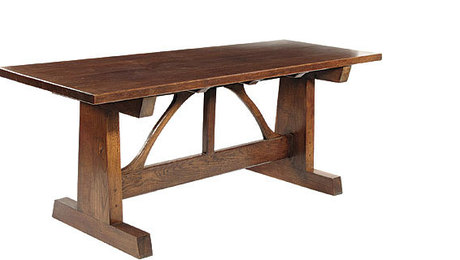
Uncommon Arts & Crafts
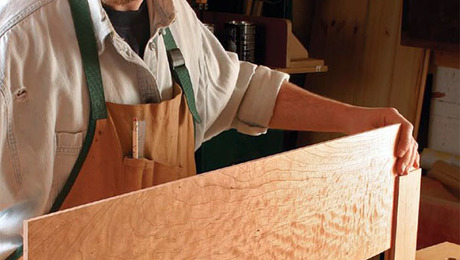
Top Ten Arts and Crafts Projects

Making an Arts and Crafts Chair
Fine Woodworking Recommended Products
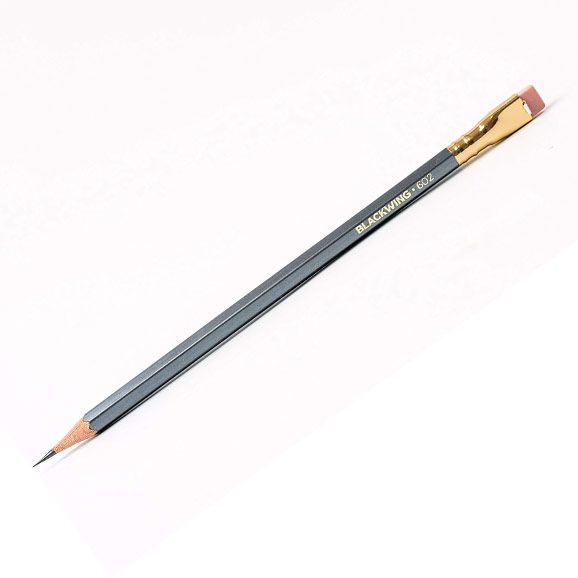
Blackwing Pencils
If you’ve listened to Shop Talk Live, you’ve heard them talk more about these pencils than you could possibly imagine.

Sketchup Class
If you’re ready to jump into designing with CAD, this is a great place to start.

Drafting Tools
Add a hole guide to this kit, and you’ll have the tools you need to work out your designs with scale drawings.
Sign up for eletters today and get the latest techniques and how-to from Fine Woodworking, plus special offers.
Download FREE PDF
when you enter your email address below.





